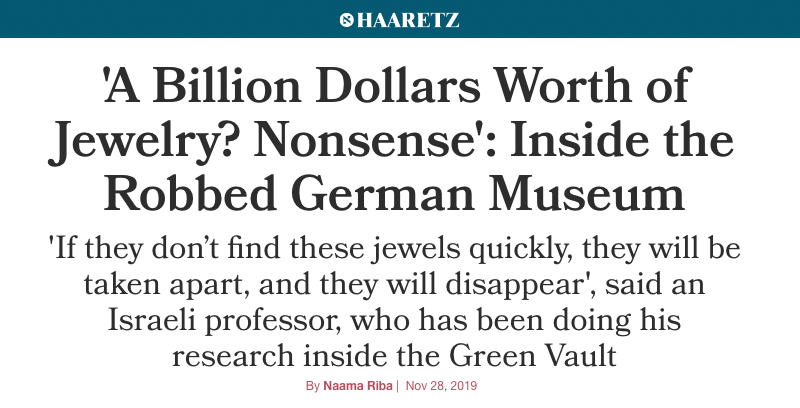
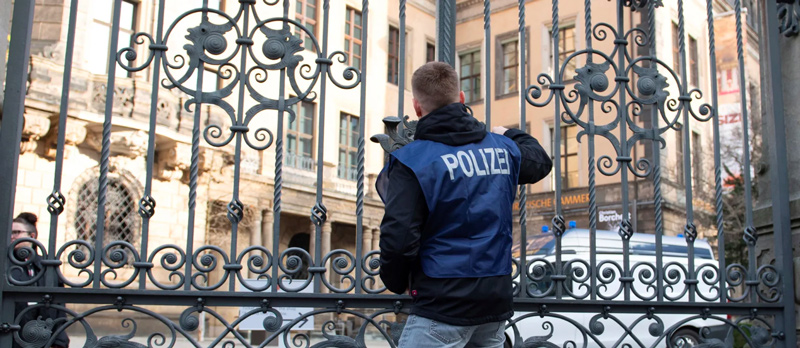
Media outlets have called it the biggest art theft since World War II: Early Monday morning, thieves broke into Dresden’s Green Vault museum and made off with three sets of 18th-century jewelry valued at an estimated 1 billion euros ($1.1 billion).
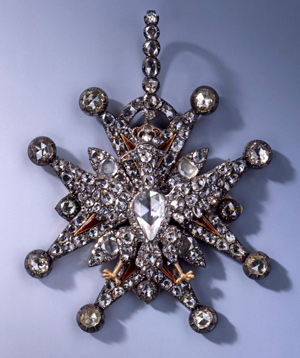 The director of Dresden’s State Art Collections, Marion Ackermann, said it was impossible to place a monetary value on the stolen items. “We cannot give a value because it is impossible to sell,” she said while appealing to the thieves not to dismantle the items. “The material value doesn’t reflect the historic meaning.”
The director of Dresden’s State Art Collections, Marion Ackermann, said it was impossible to place a monetary value on the stolen items. “We cannot give a value because it is impossible to sell,” she said while appealing to the thieves not to dismantle the items. “The material value doesn’t reflect the historic meaning.”
One person ideally placed to estimate the huge cultural value of the stolen items is Dror Wahrman, a history professor at the Hebrew University of Jerusalem.
Wahrman is writing a book about an item at the museum that was not stolen in Monday’s heist.
His Green Vault research has focused on the “Throne of the Grand Mogul Aurangzeb,” a fantastical diorama of sorts featuring 132 human figures – nobles, courtiers and servants, all enameled and jewel-encrusted – together with miniature elephants and other animals. It also features myriad unusual gifts for the ruler’s birthday, all on an elaborately detailed set representing the mogul’s court.
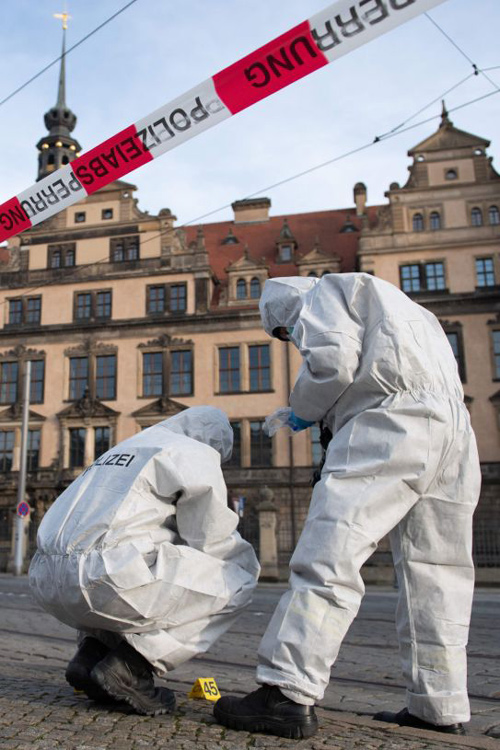
At its center is the grand mogul himself. According to the museum’s website, the work contains 4,909 diamonds, 160 rubies, 164 emeralds and one sapphire. Another 391 precious stones and pearls have been lost over the years since the work was first created in the early 1700s.
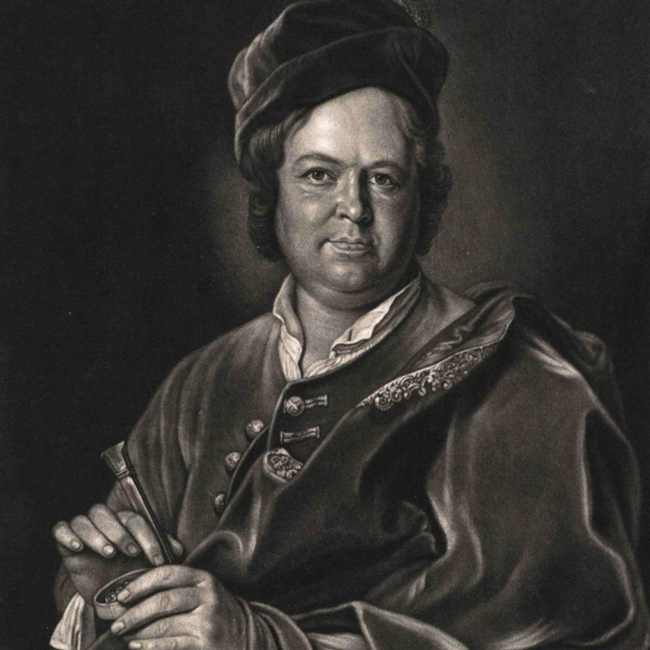
The collection was established in 1723 by Augustus the Strong of Saxony, the prince of Saxony and king of Poland in the late 17th and early 18th centuries (the height of the Baroque era).
“This object is interesting for our story because the jeweler who created it was Johann Melchior Dinglinger – perhaps the best goldsmith in the world in his day,” Wahrman said. “He also made some of the items that were stolen.” Dinglinger wasn’t only prolific in his art: He was also married five times and had no fewer than 23 children.

“This collection is special because it was created at the time of Augustus the Strong, who may hold a world record among Baroque princes as a collector with refined taste,” Wahrman said. “His collection includes many types of objets d’art, some of them imported from a great distance – such as amazing porcelain from Asia – and some created especially for him. So, the best jeweler in the world ended up with a patron who was willing to pay any price for special pieces, and it was who created these pieces. Much of Augustus the Strong’s prestige and stature was based on this collection.”
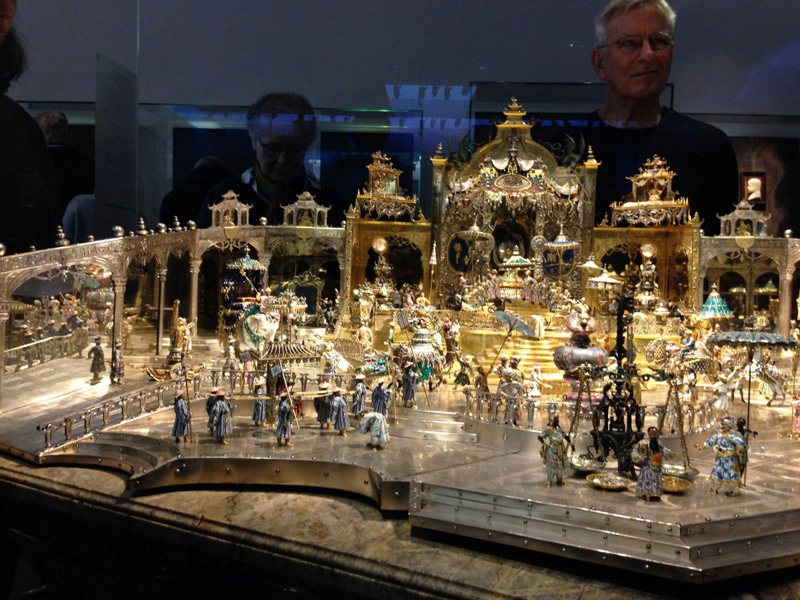
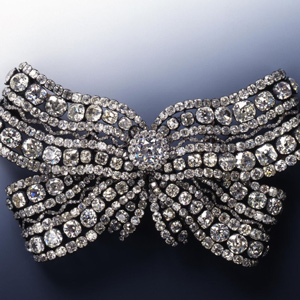
Wahrman doesn’t hold back when asked about the reports estimating the value of the stolen items at 1 billion euros. “I think it’s nonsense. To my mind, what the director said is more serious. Similarly, it’s difficult to assess the value of the ‘Mona Lisa.’ I don’t think the collection can be accurately appraised. But when it has to be done for insurance purposes, a more precise cost is set, based on the value of the precious stones and the piece in which they are set.”
Another interesting aspect of the Green Vault is that it mostly survived the carpet-bombing of Dresden by the Allies at the end of World War II in 1945. Three of the Green Vault’s eight rooms were destroyed but were restored after the war.
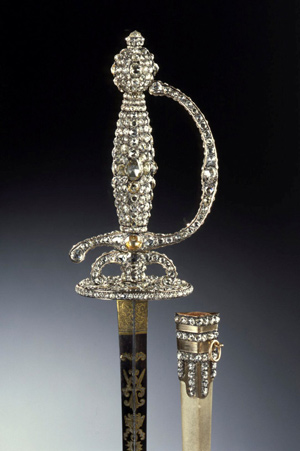
“We’re familiar with Dresden from the bombing in February 1945, but the city was also shelled by the Prussians in the 18th century. The fact that the collection was preserved despite everything the city has gone through makes it – and where it is located – unique. When I saw the collection for the first time a decade ago, I almost fainted in astonishment,” Wahrman recounted.
The State Art Collections in the Green Vault are housed on two floors. “The collection is displayed in a manner that is similar to the way Augustus the Strong displayed it in the 18th century,” Wahrman noted.
“There’s a series of eight rooms on the first floor, arranged by medium: The first room is amber; the second ivory; in the third is silver; until you get to the Hall of Treasures, including the ‘Throne of the Great Mogul.’ Visitors today have the same experience as the privileged visitors who saw it in the 18th century. The abundance can actually give you a headache,” he said.
Can you describe the objects in the three stolen sets?
“They are jewels of power. Various brooches, daggers, ornaments and other items establishing the position of the king, including those signifying his membership in important international chivalric orders. Each set contains around 35 items, and every item has dozens of precious stones. If they don’t find these jewels quickly, they will be taken apart and they will disappear.”
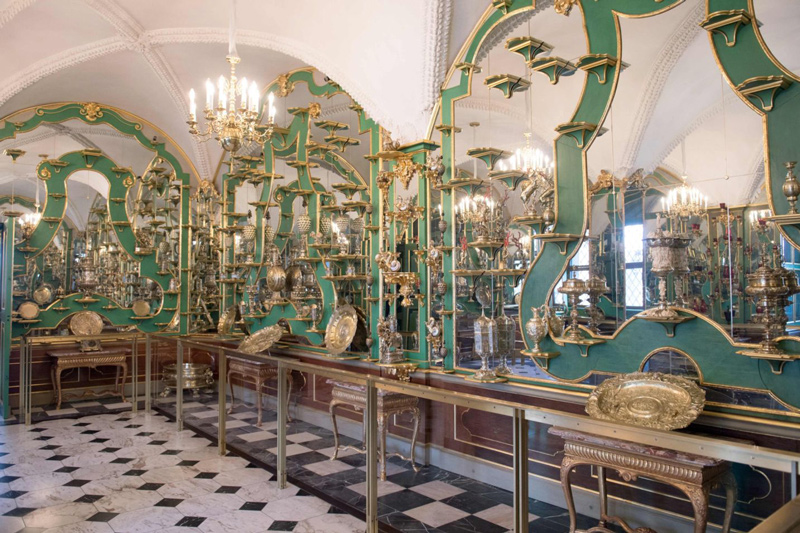
According to news reports, the burglars set a fire early Monday, causing a power outage that shuttered the museum’s alarm system.
“It’s incomprehensible,” Wahrman said. “It’s ironic that, around a decade ago, the museum’s director announced that such a thing couldn’t happen there.” (In an interview with Germany’s Die Welt newspaper in 2010, the museum’s then-director, Martin Roth, boasted that the Green Vault was “as secure as Fort Knox.”)
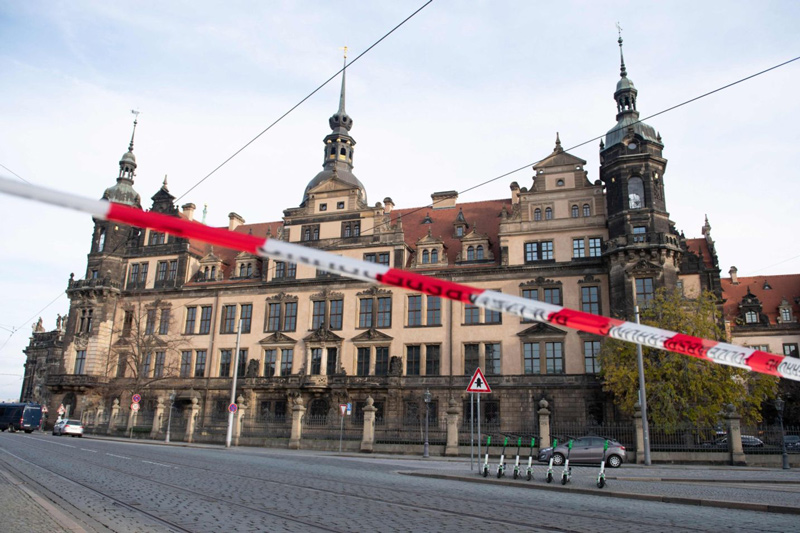
Can you compare the collection’s value to that of other collections?
“It’s akin to a theft from the British Crown Jewels” held in the Tower of London, said Wahrman. “Even more than that. thousands of objects. But we can take comfort from the fact that most of the collection was not stolen.”